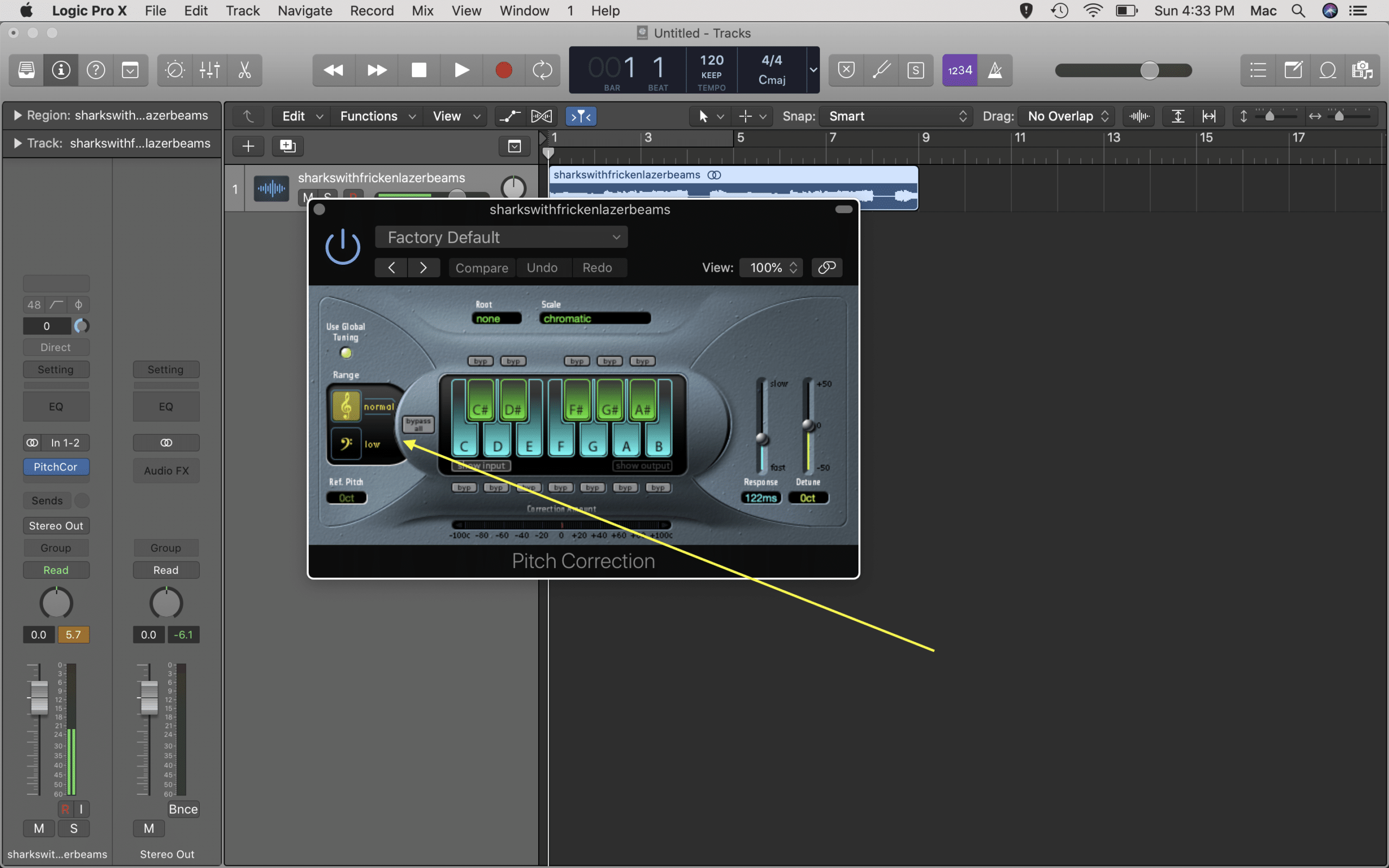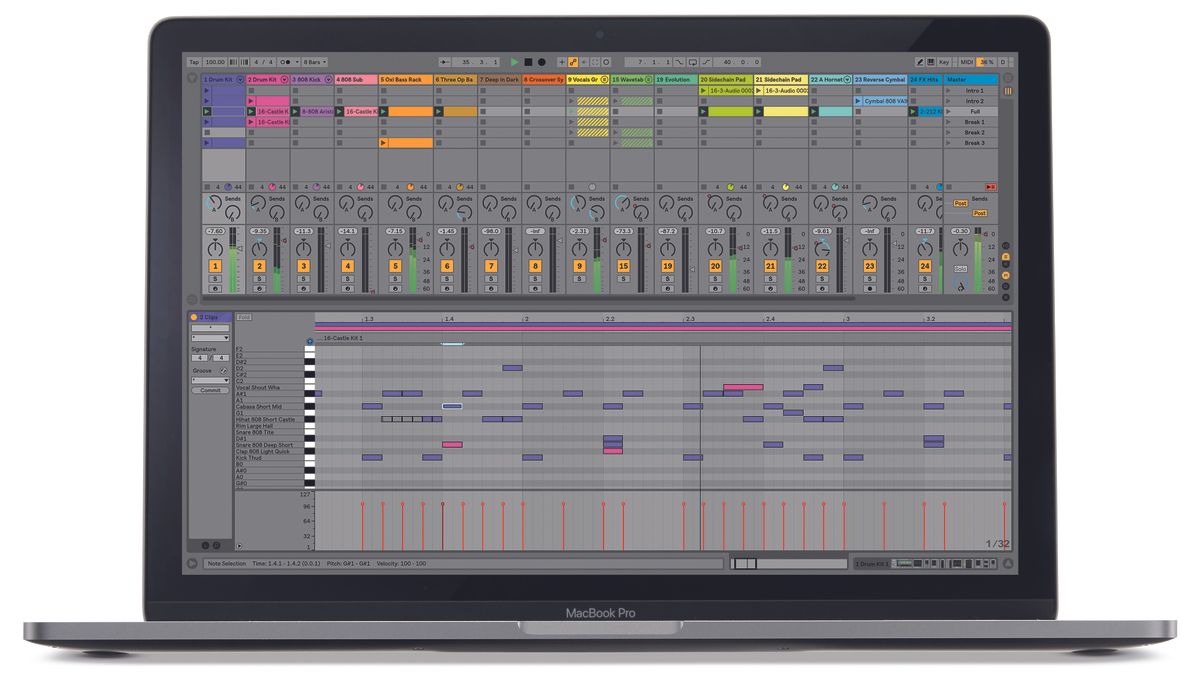Using Logic Pro's Pitch Correction plug-in to 'force' the pitch of a vocalist's melody creates a sound that is currently fashionable. With a response time set to 0 ms you can predetermine the notes in a melody or even change the key of a performance by selecting pitches in the plug-in.
Either way now’s the time to implement the process, using something like Melodyne 5 essential, which is included with Nectar 3, or other pitch-correction software you’re already using, such as RX’s various algorithms, your DAW’s innate correction (Logic has passable pitch-correction), and others. When we talk about using MIDI FX, we’re describing ways to control a MIDI instrument using the MIDI Effects tools within your DAW, such as Logic Pro X or Ableton. Different DAWs have different tools, meaning some functions are unique to certain DAWs, while most share at least a few generic effects tools. I love Cubase, but it has been quite flakey and unstable since Apple released Big Sur. It also doesn't work at all with Apple's M1-based MacBook Pro and Mac mini. I haven't been able to use Cubase since November 2020. If you have an M1-based Mac and need to work right away, I'd recommend either Logic Pro X or Studio One 5. How to Trigger Live Pitch Correction in Logic Pro X. Last updated on: 5/23/2019 3:42:36 AM. Learn how to set up Waves Tune, Waves Tune LT and Waves Tune Real-Time as AU MIDI-controlled effects in Logic Pro X, so you can trigger pitch corrections and manipulate recorded tracks with a MIDI keyboard.
Of all of the great new features included in Logic Pro X, Flex Pitch is a real game changer. Many companies have come before with offerings for time and pitch manipulation, so it's interesting to see how Apple was going to change the game. There are many details that many may miss on accident if they weren't looking closely. Apple put their thinking cap on to make this, and came up with something powerful, flexible, and.. well.. slick.
Starting Flex Pitch in Logic Pro X
We've got some vocals to tune! To get them ready, we need to turn on Flex mode:
- Turn on Flex mode by clicking the Flex mode button in the main window
- Turn on Flex mode on the tracks to be flexed
- Choose Flex Pitch from the list of available algorithms

Flex Pitch is separated out from the rest of the algorithms, because we can mess with pitch as well as time. Instead of giving us Flex and transient markers, Flex pitch will be using notes. Here's how everything looks in the Main Window:
Getting Flex Pitch going in the Main Window of Logic X.

Working with Notes in the Main Window
The notes Flex Pitch has detected show up as very thin blue lines within the region we wish to edit. In the Main Window, we are able to do global changes to the pitch of our audio region. Flex Pitch is pretty good at detecting the correct pitch, and we may be able to edit all of the notes in the Main Window and be done! (If only we were so lucky.)
- Hold Shift, and lasso the notes within the region in the arrange window that are to be tuned.
- Click inside the shaded area of the note, click and hold, and pull down.
- You'll hear the pitch being changed, and when the pitch comes close to the center of the region, the notes should lock at their perfect pitch.
- Have a listen to your work.
The Flex Pitch Tool displays a useful position and pitch readout.
Dragon war g9 thor gaming mouse driver download.
With Flex Pitch in the Main Window, we are offered very sweeping changes. Flex Pitch is pretty good at finding the pitches, and the correction is usually pretty good, but to get the job done properly, we are going to need to use the Audio Track Editor.
Working with Flex Pitch in the Audio Track Editor
The Audio Track Editor is new to Logic Pro X, and is a wonderful way to do fine editing of Flex Pitch. To open the Audio Track Editor, simply double-click at the top of an audio region that is to be flexed.
The Audio Track Editor has an inspector on the left side, and the notes show in a grid on the right. The inspector is used for changing the pitch and time of several notes at once, and the grid to the right of it is where notes are meticulously edited individually.
Flex Pitch at work in the new Audio Track Editor.
Using the Inspector for Flex Pitch
To use the inspector, simply select whatever notes you wish to edit, then choose one of the following actions:
- Time Quantize - This takes notes and quantizes them to a grid, similar to MIDI notes in the Piano Roll editor
- Scale Quantize - This will confine the note pitches to a specific scale
- Pitch Correction - This will try to change all pitches so they are closer to their '˜perfect' state. With a slider, this can be done in degrees
- Gain - This will adjust the gain of any selected notes

The Inspector provides useful controls to manipulate the pitch of your audio files.

The inspector is more discerning than the Main Window, but for detailed work, it's advised to get inside the region and work with individual notes.
Hot Zones
In the region area to the right of the inspector, we have notes. These notes have six hot zones on them. They are on the left and right upper and lower corners, and they are also found midway across on the top and bottom of the note.
These hot zones perform the following functions:
- Pitch drift in/out - For sliding from one note pitch to another
- Vibrato - Performance a little shaky? We can fix that.
- Fine Tuning - In cents, (100 cents per semitone)
- Gain - Increase and decrease gain, and watch the waveform change
- Formant - Make you voice sound natural when higher or lower in pitch. (Can also be dastardly turned into the Mickey Mouse or Frank Zappa tool).
Hot Zones provide convenient and quick access to essential functions when using Flex Pitch.
Finding Creative Uses for Flex Pitch
So we know the basic anatomy of Flex Pitch. Creatively, what can we do besides tuning vocals?
- A nice place to start is copying regions with Flex Pitch data and then tuning them up or down to create backing vocals.
- Another good creative use of Flex Pitch is to take instruments that have no (or dubious) pitch, and forcing them into line.
- There are also other features built into Flex Pitch that take advantage of the detected note data. MIDI can be generated from this powerful tool and reused in other areas.
- Create new notes in the Audio Track Editor that allow you to create alternate melodies.
- Radically alter formants to give a vocal an extremely freaky vibe. Artists to listen to for inspiration are Grimes, Fever Ray, and CocoRosie. Interesting and weird.
Conclusion
Flex Pitch is not just a tool for out of tune singers. It can be used to greatly change the timbre and emotional feel of not only a vocal, but any other instrument that is put under its influence. Copying and pasting several regions of Flex Pitch data will help create iterations of melodies and motifs that quickly spin into insanely creative territory.
The fact that all of these techniques are extremely intuitive gives users a big leg up over programs like Melodyne and Auto-Tune. In these programs, you had to first write the audio in real time into the plug-in, where the content stayed, even when a region in the Main Window was deleted. I don't know how many times I ended up with a vocal on my percussion stems because of this. Thanks to Logic Pro X's new Flex Pitch, I don't believe that is going to be a problem anymore.

Pitch Correction Logic Pro X Free Download
To learn more about Flex Pitch, check out this tutorial: